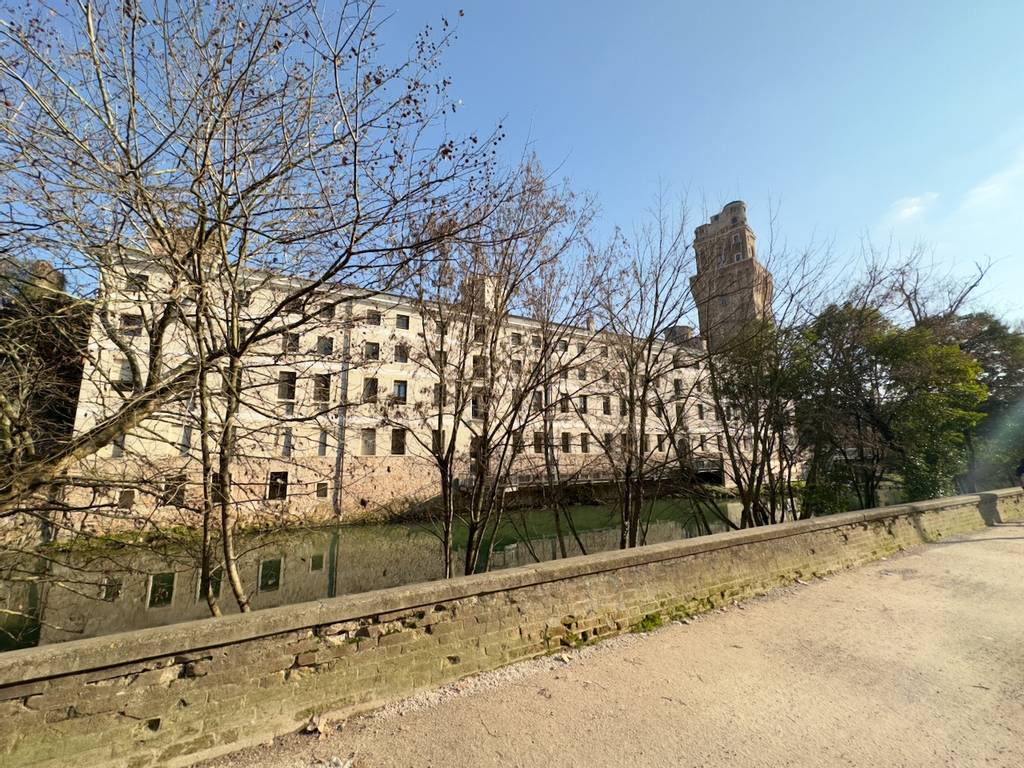The Carrara Castle
The castle is one of the important sites of Padua that have marked its history with its identity, an architectural space where great events are intertwined with the life of men that have left their memories in stone

The Carrara Castle is a fortification of early medieval origin placed on the bifurcation of the Bacchiglione, the river that flows in Padua and feeds its internal canals. It’s renowned for its high tower, LaSpecola, which has been the astronomical observatory of Padua since 1765. The rich history of the tower recalls the various historical periods experienced by the city, from oppression to scientific freedom. As for the castle, the times weren’t so kind and some of its historical, architectural, artistic and military identity was lost and today almost unknown to most of the citizens.
The history of what will later become the Carrara Castle begins in the age of Charlemagne when a stone wall and an embankment were built in a place of important transit ever since Roman times. After the invasion of the Hungarians in 899, here was erected a defence tower, the Torlonga. Then, in 1242, Ezzelino III da Romano, lord of Padua, built a fortified complex with two towers on the site, as a defensive pivot of the thirteenth-century walls. The largest tower incorporated the Torlonga and it was the place where the tyrant kept locked up and tortured his prisoners.
After the end of Ezzelino's reign, the fortifications were abandoned until the lordship of the Carraresi had the castle rebuilt. Francesco I da Carrara entrusted the work to Nicolò della Bellanda, a significant figure in the military architecture of the time. The castle was connected to the Carrara Royal Palace (Reggia Carrarese) by an elevated passage called “the ferry to the walls”, that linked the political and the military centres of power. Similar to the Carrara Palace that was a residential complex the family had built within the city walls, the new castle wasn’t just a simple fortress; it also served as a place of reception for famous people. It was described at the time as one of the “most beautiful castles from a strategic, military and architectural point of view”. It comprised defensive walls, two drawbridges, a parade ground, loggias, and a frescoed armoury. The whole castle was decorated inside and out, and the two towers were red and white checkered painted, as can be seen in the fresco representing the view of the city made by Giusto de 'Menabuoi in 1382 in the chapel of Blessed Luca Belludi of the Basilica of Saint Anthony.
When Padua fell under Venetian rule in 1405, the long decline of the Castle began. The defensive medieval walls built by the Carraresi were replaced with the sixteenth century's Renaissance city walls, and owning to the long period of peace under the rule of the Republic of Venice, the castle and the Torlonga lost their military function and fell into neglect. In fact, in the eighteenth century, the ancient fortress, largely dilapidated, was called “the old castle” or Castelvecchio. The Republic of Venice contemplated the construction of a New Castle on the east side of the walls, but there remain only a few bastions of this project. and
Numerous interventions divided the complex into various parts with different functions. But the most significant transformations took place at the end of the eighteenth century when to old Torlonga tower was transformed into an Astronomical Observatory.
The Carrara Castle, the pride of medieval Padua, has undergone great decay and interventions over the years, to the point of being almost abandoned. One of its most significant transformations took place at the end of the eighteenth century when to old Torlonga tower was transformed into an Astronomical Observatory. Conversely, the old castle had been used for some time as a warehouse for grain, straw, and hay, a warehouse for weapons and ammunition, and then transformed into a prison, a function that it maintained long after the Second World War. The Castle today it had been returned to the city and due to the privileged central position, the dimensions, the complex symbolic stratification incorporated in it, a new future is underway: a place dedicated to culture and a museum of the city.
Notes
The Castel is not open to the public but the Astronomical tower and Museum is accessible through guided tours, organized in collaboration with the La Torlonga Association.
We welcome all contributions, no matter how small. Even a spelling correction is greatly appreciated.
All submissions are reviewed before being published.
Continue to changelog-

© 'Carrara Castle' by Padova.com is licensed under CC BY 4.0 Attribution copied to clipboard Failed copying attribution to clipboard
We welcome all contributions.
All submissions are reviewed before being published.
We welcome all contributions, no matter how small. Even a spelling correction is greatly appreciated.
All submissions are reviewed before being published.
Continue to changelogWe welcome all contributions, no matter how small. Even a spelling correction is greatly appreciated.
All submissions are reviewed before being published.
Continue to changelogWe welcome all contributions, no matter how small. Even a spelling correction is greatly appreciated.
All submissions are reviewed before being published.
Continue to changelog
